Vaping is on every corner – so why do we still not know if it’s safe?
The first e-cigarettes were invented as a healthier alternative to smoking but after a spate of deaths due to vaping-related illnesses, Sam Hancock asks: how did it get so big when we still don’t know the risks?

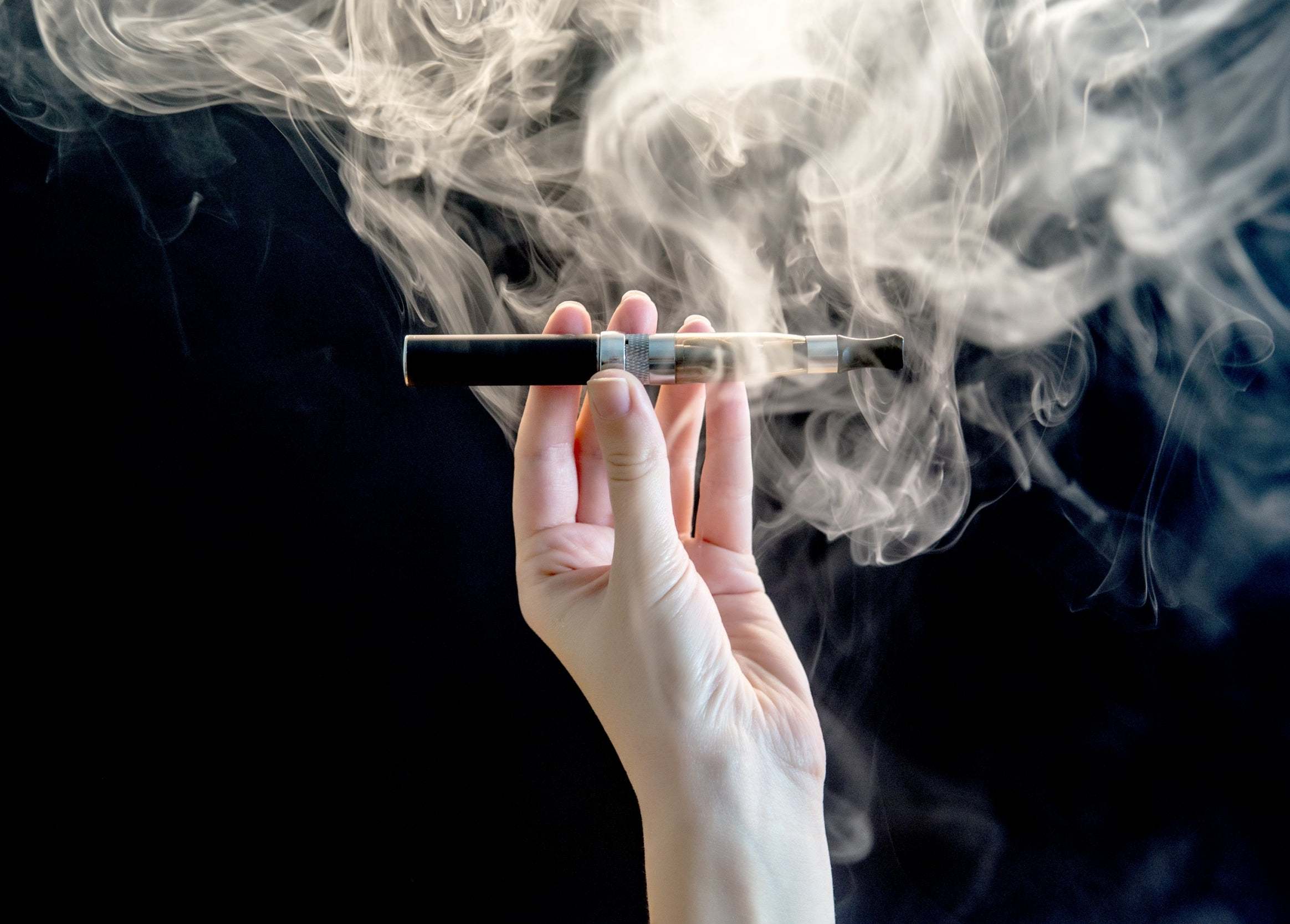
When the idea of e-cigarettes surfaced in 1927, and the first smokeless, non-tobacco cigarette was produced in 1963, no one thought they’d be questioning whether it was any less dangerous than a regular cigarette some 56 years later. And yet, here we are, in 2019, doing just that. On the contrary, Herbert Gilbert (who made the Sixties cigarette) was hopeful that by now the majority of the UK would own one of his creations and smoking would be almost obsolete. But as news broke on Monday that a ninth American had been killed due to vaping-related complications, smokers everywhere turned their noses, and their rollies, up at the 10 o’clock news.
The concept was simple: create a “safe” cigarette that contains no tobacco but still provides users with a nicotine hit – nowadays flavoured offerings are available, from mint to strawberry and everything in between. When Herbert first patented the invention, he couldn’t have predicted how much of a craze it would become in the mid-2000s. It wasn’t until the 1980s, though, when a man called Phil Ray visited his physician, Dr Norman Jacobson, that the term “vaping” was coined – on account of the first model using water vapour – and the vapes we know today were created.
In a 2014 interview with the online website Ashtray Blog, Texas-based Jacobson said the idea came from Ray, who wondered if there was a way to “inhale pure nicotine” without actually smoking a cigarette. According to the doctor, the first model – which was plastic – “used paper to absorb liquid nicotine before being inhaled” – and while Jacobson said he and his team were well aware of the toxins nicotine contained, it was judged “less dangerous” than a regular cigarette due to “the carcinogens within the tobacco leaf, that are either transported or modified by heat and the smoke”.
The idea that vaping is healthier than smoking is an unfounded marketing claim ... Inhaling tobacco is extremely dangerous and harmful, so to even think that vaping is safer than such a lethal habit isn’t saying much
A piece of plastic that looked like a cigarette, acted like a cigarette and, for all intents and purposes, was a cigarette, but without the dire health risks? Surely smokers’ prayers had been answered. Yet, in the age of Juul’s multimillion-pound monopoly of the now lucrative vaping industry, something appears to have gone very wrong.
Jonathan Whiteson, medical director for cardiac and pulmonary rehabilitation at Rusk Rehabilitation in New York City, says there is no long-term evidence to suggest that vaping is a healthier alternative to smoking. “This is an unfounded marketing claim. Inhaling tobacco is extremely dangerous and harmful, with users most likely to die from cancer, lung or cardiovascular disease,” he says. “So to even think that vaping is ‘safer’ than such a lethal habit really isn’t saying much.”
Surely, though, the fact that vaping is tobacco and tar-free must mean it’s healthier? Whiteson isn’t so sure. “Perhaps it is less harmful than using tobacco but this hasn’t been proven yet. Consider this: to bring a new drug to market, it must go through phases of development and clinical trials to understand risk versus benefit,” he says. “It must pass rigorous standards of scientific study. Only after this, when a safety profile is established, can it be released to market. Ultimately, it’s up to the vaping industry to prove their products are safe, with an acceptable risk profile, before bringing their product to the masses. It is not the responsibility of the medical community to study the effects of widespread vaping in the community to prove it is not safe.”
On Monday it was reported that a Kansas man in his 50s had died because of excessive vape use, making him the second person in the state to be hospitalised and killed due to e-cigarettes, and the ninth overall in the US. Kansas governor Laura Kelly said in a statement: “We are working tirelessly with other states and organisations to gather facts on e-cigarettes and its effects. We’re also coordinating a response to combat this epidemic, so that families can avoid such tragic outcomes.” While both victims had prior health conditions, not all of the deaths seen in recent weeks have been linked to preexisting conditions.

On Friday, when a Missouri man in his 40s with “no prior lung illness” was said to have died of “acute respiratory distress syndrome after his lungs were unable to provide enough gas exchange, leading to heart failure and near cardiac arrest”, the Centres for Disease Control and Prevention (CDC) released a statement saying: “There have now been eight deaths and 530 confirmed and probable cases of lung injuries related to e-cigarettes in the US … and vaping-related illnesses in 38 states and one US territory.”
Dr Anne Schuchat, principal deputy director of the CDC, said she “wished we had more answers” but stressed that anyone claiming issues were only arising in cases where people had smoked vapes containing the psychoactive substance THC (tetrahydrocannabinol) were untrue. In fact, she said, the issue is a lot more complex because doctors are dealing with “severe lung injuries” that have never been seen before, such as a buildup of “unknown oily substances”.
Symptoms of vape-related lung illnesses seen so far
Cough
Shortness of breath
Chest pain
Nausea
Vomiting
Diarrhoea
Abdominal pain
And after testing a range of vapes, the CDC and Food and Drug Administration’s (FDA) Centre for Tobacco Products found so many different ingredients, including vitamin E acetate, and such “a mix of results” that it was hard to pinpoint any one substance to hold accountable.
Back in 1987, Jacobson and Ray’s cigarette, produced under the name Favor by their company Advanced Tobacco Products Inc, was banned by the FDA because it was deemed to be a drug. Jacobson would later say that symptoms the FDA found troubling, such as complaints about excessive hiccups, were simply “symptomatic side effects of smoking”.
The FDA, in a letter to Jacobson, told him that although they had considered his “repeated insistence that nicotine is not the villain in cigarettes … Dr Luke Burchard, [then] chairman of the Illinois Interagency Council, said nicotine causes addiction to cigarettes and has been linked to high blood pressure, foetal distress in pregnant women who smoke and can cause ulcers by stimulating production of gastric acid.”
I found myself feeling worried if it wasn’t in my pocket, or anxious if I was ever out of pods or charge ... in the end, I returned to regular smoking because I still wanted to smoke, but felt a lot more comfortable enjoying a cigarette or two a day rather than sucking on a vape constantly
Former New York resident, Zoe, who now lives in southeast London, started vaping when she was 21. Although she never experienced any serious bouts of illness, she says its dangers lie in how addictive the machines are. “I started using a Juul when they were first released in the US and I knew that the nicotine in one pod amounted to an entire pack of cigarettes, so my head rushes were always really intense,” Zoe, a freelance writer, says. “I found myself feeling worried if it wasn’t in my pocket, or anxious if I was ever out of pods or charge.”
She says it wasn’t until she left the US and moved to Barcelona last year, before moving to London, that she was able to quit. “I knew I wouldn’t be able to buy pods in Europe, because it wasn’t out here yet, and I honestly think that was the best way to quit. When I moved away and stopped using a vape, I realised how addicted to it I really was.” In the end, Zoe says she opted to return to regular cigarettes because she “still wanted to smoke, but felt a lot more comfortable enjoying a cigarette or two a day rather than sucking on a vape constantly”.
Granted, deaths attributable to old-school smoking are much higher than vapes. In fact, the NHS recorded almost 80,000 smoking-related deaths in 2017, but isn’t that part of the problem?
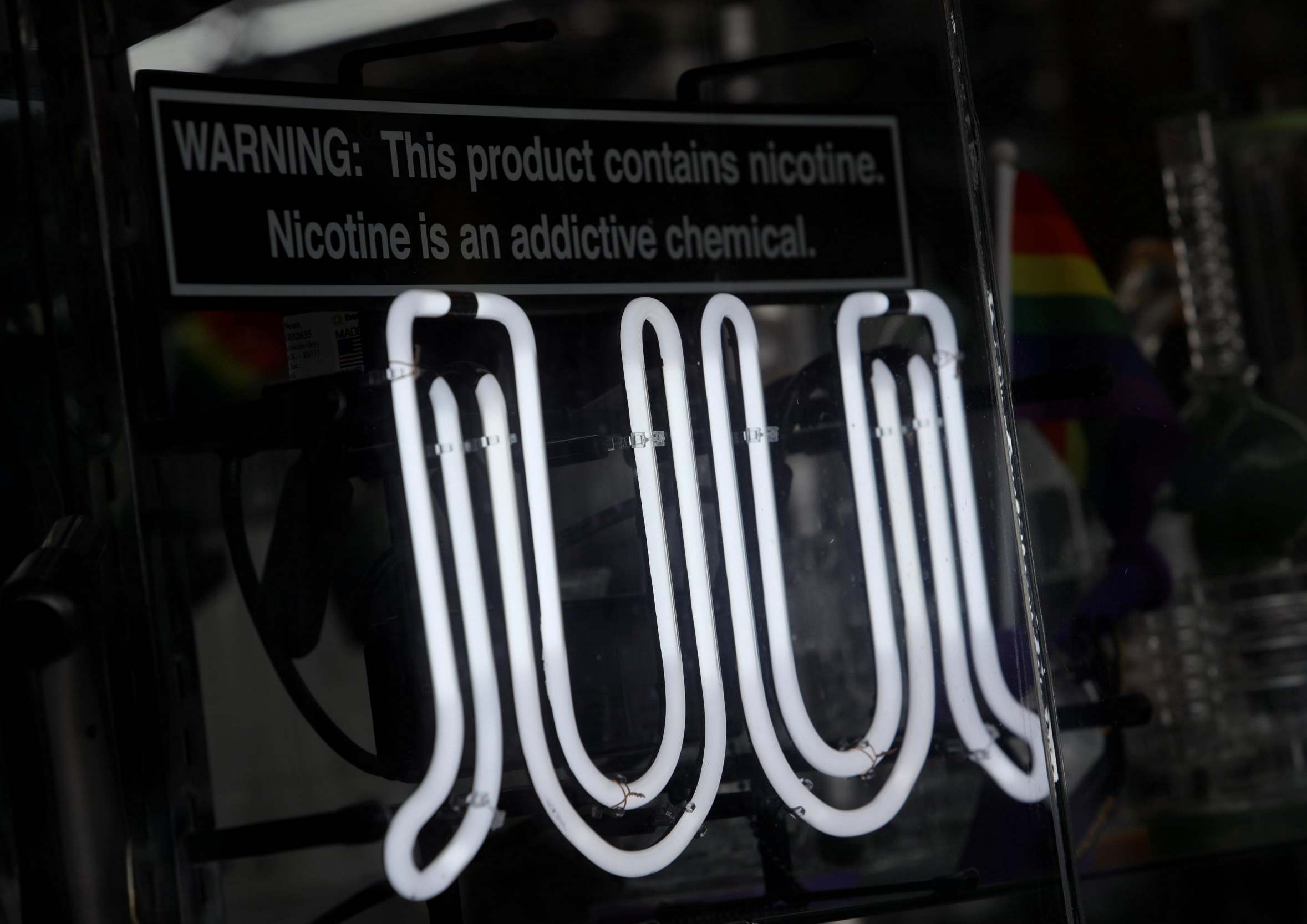
Thanks to a 2016 decision by the British government to debrand all cigarette packaging, most smokers know the dangers of what they’re doing. Anyone buying a 30g pouch of Golden Virginia in the UK is forced to confront the side effects every time they roll a cigarette, whether it’s the image of a child staring at her hospitalised, dying father or the man curled up in the foetal position because smoking has made him impotent.
And yet more than 15 per cent of Brits over 18 still smoke today, with just 5.5 per cent saying they vape. Clearly there’s still a huge market for smoking, despite users knowing the dangers – can vape users be as confident about what they are inhaling?
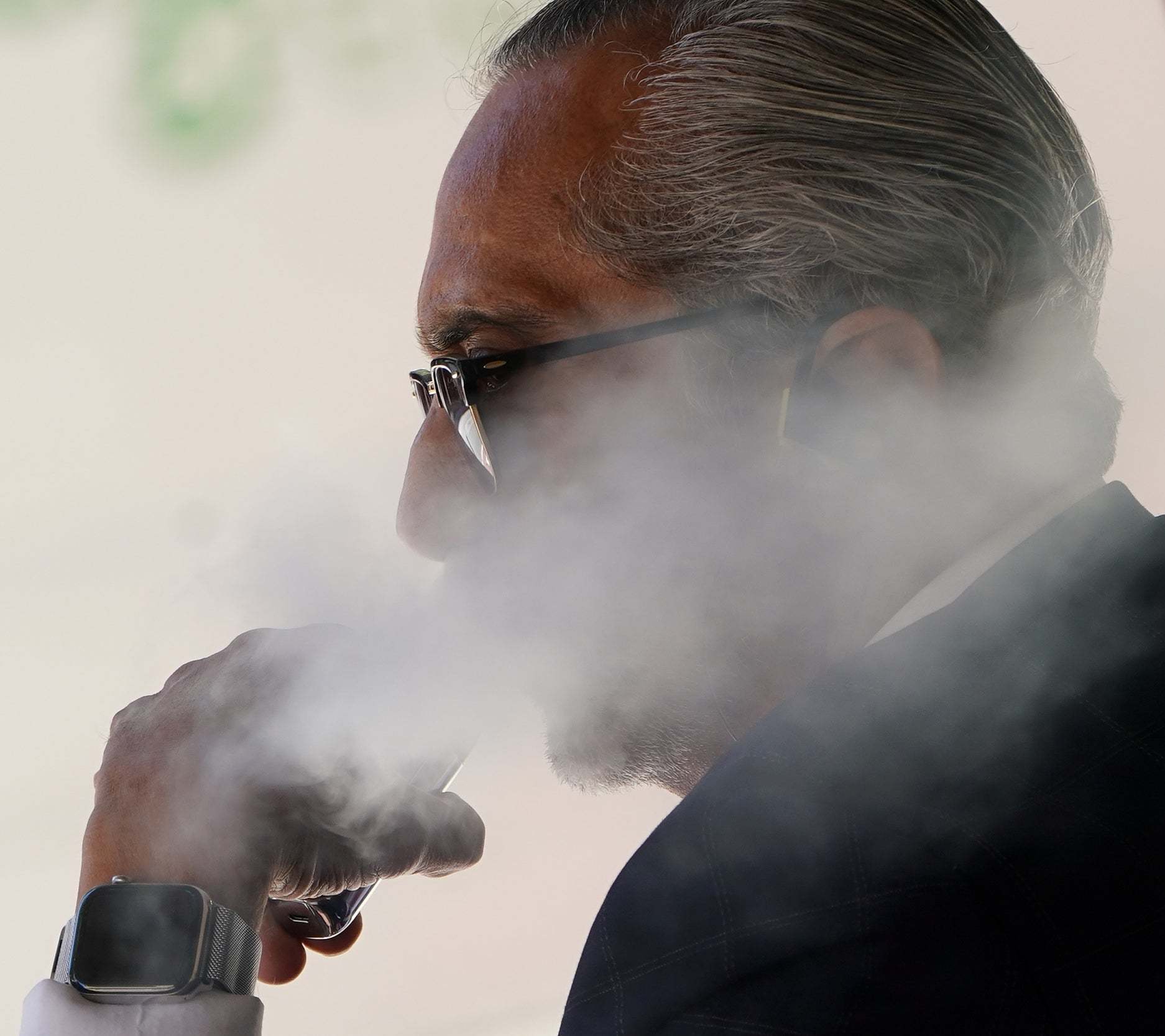
“In the UK, e-cigarettes and e-liquids are tightly regulated and this means there’s a real difference to what’s available on the market in the US,” Rachael Hodges, senior policy officer at the British Lung Foundation, tells me. “The nicotine strength in e-cigarettes in the UK is capped at 20mg/ml2 and tank sizes are also restricted. Products in the UK must be notified to the Medical and Healthcare Regulatory Agency (MHRA) before being sold and must also list all ingredients.
“The US has also reported a sharp rise in the numbers of young people taking up vaping, whereas data from NHS Digital shows this is not happening here in the UK, with regular use amongst young people staying at 2 per cent since 2014.” But, Hodges highlights, “We must continue to monitor the number of young people who start to vape regularly.”
All I ever hear is that if we invented alcohol now it wouldn’t be legal… and yet we’ve just revolutionised smoking to not be harmful and pumped it out to the masses with medical backing only to realise it’s exactly as harmful as smoking
The disparity between vaping in the US and the UK is huge. Despite this, the MHRA announced last week that it had “received 62 reports of adverse reactions associated with nicotine-containing e-cigarettes from across the UK between 20 May 2016 and 6 September 2019”. Although the agency pointed out that the reports “are a suspicion by the reporter that an e-cigarette has caused ill harm” and not necessarily the case in all 62 instances, still, it seems like a slippery slope. It only takes a Google search to be reminded of the spice pandemic that took over UK cities, particularly Newcastle, in 2017. If a vaping black market is sweeping the US now, it won’t be long before it arrives in the UK too.
Phil Boyle, managing director of UK-based Vampire Vape, says it’s still early days and we have a long way to go until we fully understand the cause of the problems facing vapers, though the latest information “suggests it is due to the addition of THC and vitamin E acetate into vaping products, which have been purchased illegally and often on the streets, falling under no regulation. Within Europe, products containing nicotine are highly regulated and extensively tested prior to being offered for sale, and as a result there have been no recorded cases like these in the UK or Europe.” He added: “It is no coincidence that these cases have occurred in such a short space of time, but large numbers of people have been vaping in relative safety for over 10 years. Our advice echoes that of Public Health England: ‘Vaping isn’t completely risk-free but is far less harmful than smoking tobacco.’’’

But what about the people who enjoy puffing on their modern devices? Joe Edwards, a 26-year-old sales manager from London, has been vaping for over a year and says he started “in an attempt to quit smoking and wean myself off both forever – I saw it as the lesser of two evils.” He says that while current news stories have certainly made him stop and think about what he’s inhaling, he has never felt ill after vaping, apart from a “few sore throats”, and still advocates it as “a healthier alternative to smoking and for its lack of smell, less expense and general ease – and it means that on the go I can have a quick vape and carry on with what I’m doing without having to stop and commit to a full cigarette.”
Worryingly, Edwards admits he never “really knew if vaping was safer than smoking – I just assumed it was”.
“I can only go by what I’m told by trusted and educated third parties, such as the NHS, doctors and people who work in the industry and have been present for testing and the longer-term results,” he says. “I was led to believe the water vapour can’t harm the lungs and that e-cigs don’t have the circa 7,000 harmful chemicals that cigarettes do. I didn’t realise they’d just replaced those harmful chemicals with pseudo non-harmful chemicals that have flown under the radar of testing.”
So, will he quit after reading recent news reports? “I’ve been looking to quit anyway, so I do think this backlash will spur me on to stop,” he says. “And if all of this does turn out to be true, and vaping is more harmful than I thought… I’m really hoping the old wives tale of your lungs regenerating if you quit smoking before you’re 30 isn’t a lie too!”
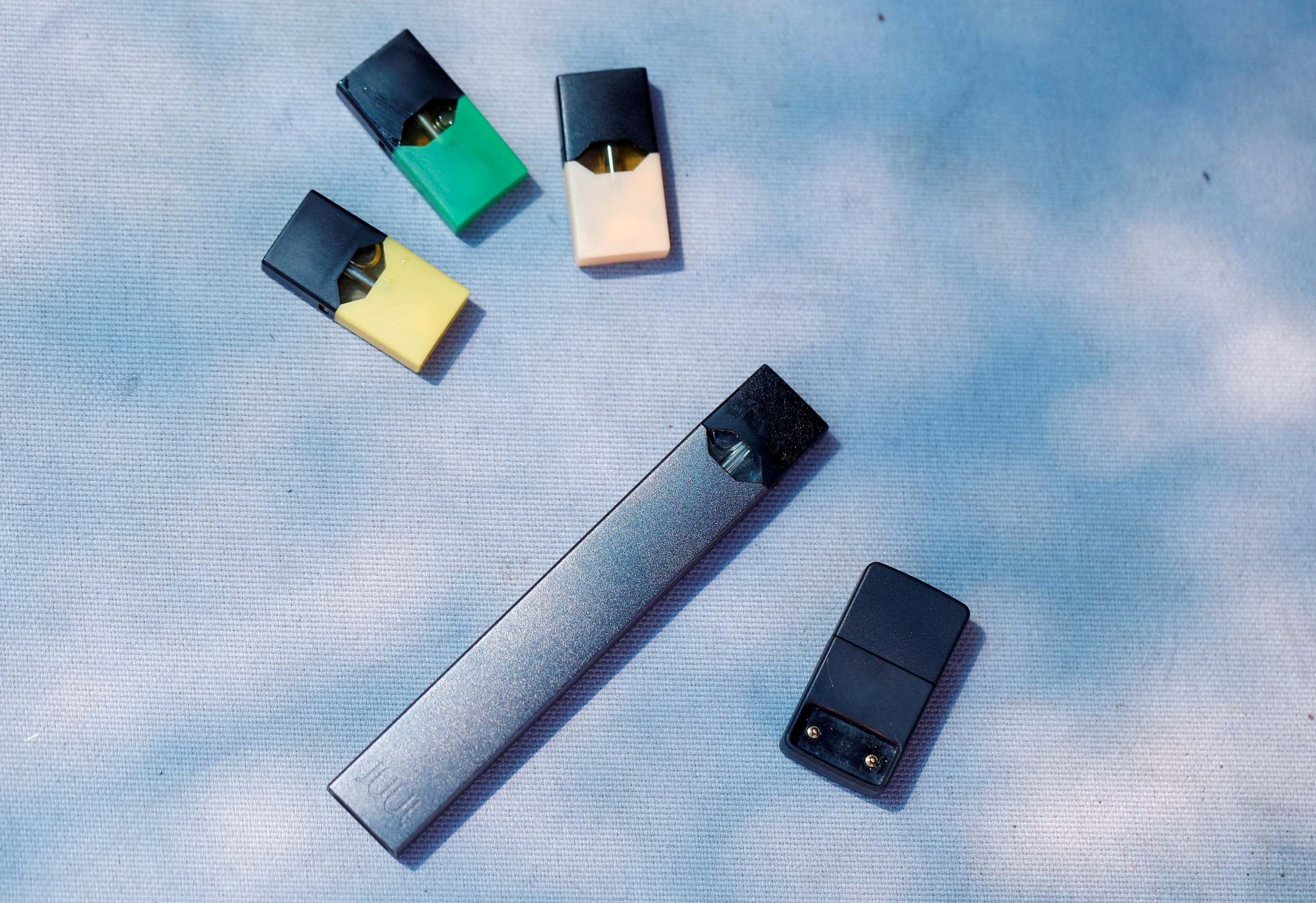
Valued at £30.4bn by the end of 2018, American vape brand Juul has paved the way for smaller e-cigarette businesses like Vampire Vape. When asked about the ongoing issues that brands face in the wake of recent events, a spokesperson said: “Juul Labs’ mission is to improve the lives of the world’s 1 billion adult smokers, including 7.2 million in the UK alone, by eliminating cigarettes.
Ultimately, it’s up to the vaping industry to prove their products are safe, with an acceptable risk profile, before bringing their product to the masses. It is not the responsibility of the medical community to study the effects of widespread vaping in the community to prove it is not safe
“Our product was designed to help them switch away from combustible cigarettes, which kill up to 50 per cent of those who use them and were implicated in nearly 100,000 deaths in the UK last year alone.” And when asked about the lack of research that has gone into the dangers of vaping, they added: “We fully support the call for additional long-term studies into vaping, and we are dedicated to producing research that is relevant to the public health community.”
This lack of testing is something that both Edwards and Whiteson say needs to change for these health problems to be better understood. “I think more research should be carried out and something pertaining to health should be properly tested over a long period of time,” Edwards tells me. “All I ever hear is that if we invented alcohol now it wouldn’t be legal… and yet we’ve just revolutionised smoking to not be harmful and pumped it out to the masses with medical backing only to realise it’s exactly as harmful as smoking.”
Whiteson agrees and says until this work is done vapes should be taken off the market altogether. “This is the responsibility of the vaping industry to prove safety. They should remove these products from the market until the risk-safety profile is well established. Prove safety and then bring it back to market,” he says. “Then we need to flood a market that’s reaping the financial gains and profits, and sitting back watching a social experiment go terribly wrong – with lung damage and death as a consequence.”
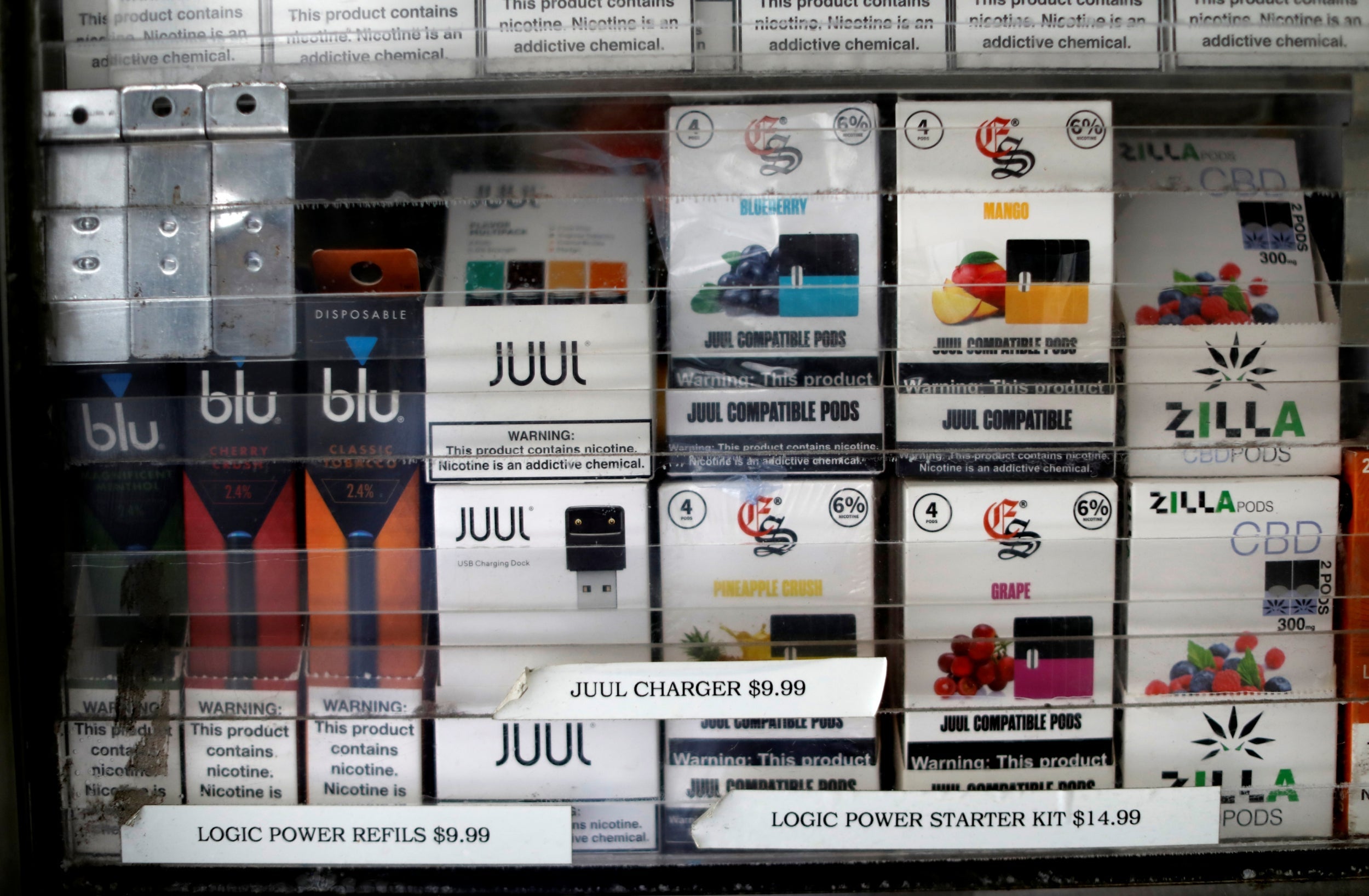
According to Doctor Care Anywhere, an online medical service that allows patients to speak to a doctor from the comfort of their own home, the years of research behind smoking simply haven’t been afforded to vaping yet. “As medical professionals, we are aware of the risks of smoking, backed up by years of medical research … The missing piece is what are the short, medium and long-term risks of vaping – we just don’t know that at the moment, and studies to answer that question need to be developed and completed,” a spokesperson for the company’s clinical team says. “Potential cases of vaping-related illness or deaths are concerning and need to be investigated fully, so users can make safe and informed decisions. Until that point, it’s difficult to measure how better vaping is to smoking.”
One thing’s for sure: the future of the vaping industry seems murky right now, not least because e-cigarette brands and doctors alike have very little knowledge of why these awful incidents are taking place. Whiteson says vaping should be “addressed like any other medication: studied, understood and then approved”. Without these basic steps forward, it seems the cigarette of the future might be best left in the past.
Join our commenting forum
Join thought-provoking conversations, follow other Independent readers and see their replies
Comments
Bookmark popover
Removed from bookmarks